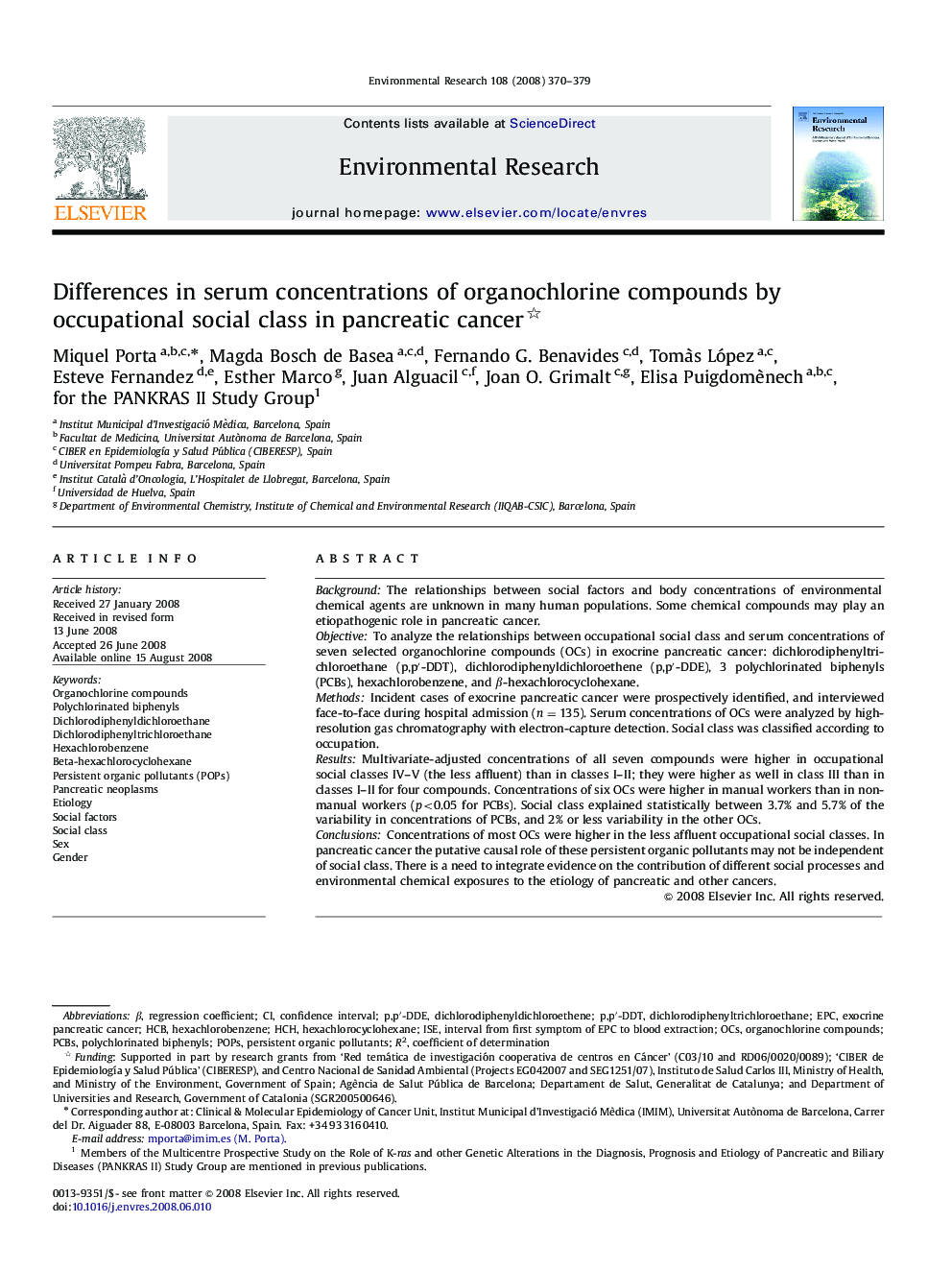| Article ID | Journal | Published Year | Pages | File Type |
|---|---|---|---|---|
| 4470695 | Environmental Research | 2008 | 10 Pages |
BackgroundThe relationships between social factors and body concentrations of environmental chemical agents are unknown in many human populations. Some chemical compounds may play an etiopathogenic role in pancreatic cancer.ObjectiveTo analyze the relationships between occupational social class and serum concentrations of seven selected organochlorine compounds (OCs) in exocrine pancreatic cancer: dichlorodiphenyltrichloroethane (p,p′-DDT), dichlorodiphenyldichloroethene (p,p′-DDE), 3 polychlorinated biphenyls (PCBs), hexachlorobenzene, and β-hexachlorocyclohexane.MethodsIncident cases of exocrine pancreatic cancer were prospectively identified, and interviewed face-to-face during hospital admission (n=135). Serum concentrations of OCs were analyzed by high-resolution gas chromatography with electron-capture detection. Social class was classified according to occupation.ResultsMultivariate-adjusted concentrations of all seven compounds were higher in occupational social classes IV–V (the less affluent) than in classes I–II; they were higher as well in class III than in classes I–II for four compounds. Concentrations of six OCs were higher in manual workers than in non-manual workers (p<0.05 for PCBs). Social class explained statistically between 3.7% and 5.7% of the variability in concentrations of PCBs, and 2% or less variability in the other OCs.ConclusionsConcentrations of most OCs were higher in the less affluent occupational social classes. In pancreatic cancer the putative causal role of these persistent organic pollutants may not be independent of social class. There is a need to integrate evidence on the contribution of different social processes and environmental chemical exposures to the etiology of pancreatic and other cancers.
